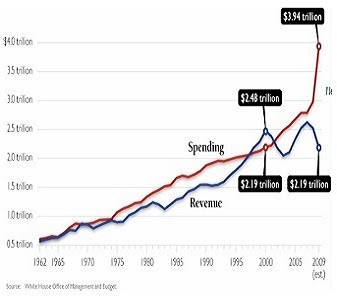My apologies to Shakespeare there...I have not done this type of analysis for quite some time for many reasons, largely time-related. But this is the kind of "forensic accounting" that I truly enjoy. The accounting standards used by public companies today have become a complete joke, and what standards remain go unenforced by the FASB/SEC/NASDAQ/FED etc. When I saw JPM's earnings headlines this morning, my doubt about the "quality" of those earnings was triggered to the point at which I felt motivated to do a cursory examination of JPM's 8-K (preliminary 10-Q) filing. I literally spent about 40 mins. just going thru the credit section located in the bowels of the 8-K, since this was the source of most of JPM's earnings boost. I would like to qualify my work by saying that I would literally need all day to go thru this report plus the footnotes of the latest 10K in order to figure out exactly where JPM is exploiting the grey areas of FASB and pushing the envelope with accounting assumptions (like loan charge-off standards, deliquency period standards, interest rate assumptions, etc). There is also a lot of information behind these numbers that would never be revealed to the public, so we have to make some assumptions about what is being manipulated on the "inside" books. There is absolutely no doubt in my mind that there is serious manipulation of accounting standards and exploitation of the fact that these standards are rarely enforced, especially on a big, too-big-to-fail bank.
Why is this important and why does the whole earnings circus on Wall Street piss me off? Because most investment money managers (big fund managers, etc), financial advisors, stockbrokers and media morons look only at the headlines reported and assume that a company like JPM is telling the truth and they grab onto the headline information and spread it as gospel. 99% of all money managers and financial advisors, even the ones with fancy initials of accolade after their names, do not understand how to thoroughly dissect an SEC financial filing. That skill is not required for them to be licensed to lose your money and take a lot fees in the process. To be sure, some Wall Street analysts will go thru JPM's numbers like I just did and put together an analytic report that might highlight some red flags, but 99% of them will reiterate a "buy" recommendation and the portfolio managers, financial advisors and stockbrokers will grab onto those reports without reading them and justify loading up on JPM stock. The whole circus is really a complete tragedy that will not end well in the long run.
So with that as a preface, let's jump into a "drive-by" look at what JPM reported and see if it makes sense and if the quality of earnings is solid or fraudulent. Everything will be compared on a 1st quarter 2011 vs. 1st quarter 2010 basis. Total revenues declined by 8.7%. Not sure I would call that positive. Net income, however, surged to $5.6 billion this quarter from $3.3 billion in 2010. Well, when you are looking at a trillion dollar balance sheet, it only takes a small "adjustment" of bad loan assumptions to generate a couple billion in accounting income. I am sure many of the assets JPM holds because they can't unload them - i.e. the toxic assets - were marked up in price to generate even more "paper income." The disclosure on that latter source of "income" in the 8-K is very poor. So how the hell did they report a huge jump in net income which was in excess of consensus expectations?
For purposes of this exercise I am just evaluating the credit statistics at a macro level. My work is not precise but it's for sure within the bounds of "horseshoes and handgrenades." To begin with, the "provision for credit losses" was $7 billion in Q1 2010 vs. only $1.2 billion this quarter. Is this reasonable? To be sure, if the 2010 number was large relative to the actual amount of losses experienced, it makes a lot of sense to reduce the provision recorded this year. "Provision" means an "estimate" of "potential" losses. You can imagine that there's a lot of "wiggle" room in the assumptions made to calculate this "estimate," especially if Jamie Dimon leans heavily on his lieutenants to come up with some accounting earnings so they can beat the street and justify Dimon's HUGE bonus this year. Let's just say that IF they had used a more reasonable 50% of the provision taken last year, it would have created a $3.5 billion accounting provision and that would have produced, roughly, only $3.3 billion of net income this year, which would have been a huge earnings miss. I think it's safe to assume that if they "over reserved" for losses last year, they "under reserved" this year. To be frank, if the Fed were not buying up toxic assets and if the Government were not guaranteeing a lot of bank assets, these provisions would much higher. Especially given that we know for sure that deliquency and default rates on mortgages are still climbing. Roughly 30% of JPM's assets are home-related loans (primary mortgages, home equity loans, home equity secured non-credit card loans, etc). It's up to you to decide if JPM is being honest here, but I will unequivocally state that they did not take a high enough provision against credit losses by a couple multiples.
Here's another interesting source of earnings management that I found. They have mortgage repurchase liability on a lot of the mortgages they underwrote and then sold off to mortgage trusts. That liability increased in 2011 to $3.3 billion from $2.3 billion last year. This despite the mortgage foreclosure moratorium we have had. That statistic alone justifies my statement in last sentence of the previous paragraph. HOWEVER, despite an increase in this liability, the provision against this liability, i.e. the amount JPM has reserved for GAAP accounting purposes, was only $420 million vs. $1.4 billion last year. That's a whopping $1.04 billion dollar swing in the expense line (lowering expenses by that much) and thus boosted net income by a little less than that, adjusting for taxes. That number is about 26 cents of the 29 cents of earnings generated from lower write-offs referenced in the headline earnings summary (see any press release). As you can see, it takes a very small change in bad-loan write-off assumptions to generate a big increase in GAAP-reported accounting earnings.
One more little statistic that will never be reported in the press or analyzed by your financial advisor or retirement fund money manager is the percentage of non-performing loans as a percent of the total amount of outstanding loans plus deriviatives. This is a HUGE area of earnings manipulation because it's data that gets buried in the bowels of financial filings and Wall Street analyst reports. This number for JPM is absurdly low, as I'm sure it is for all banks. But we know that JPM has an inordinate market share of entire derivatives market, and thus should probably be using higher assumptions for non-performing loans. Ha ha haaa. For this year, JPM is reporting $15 billion in non-performing assets vs. total loans outstanding of $685 billion. This would be 2% of total loans. They are reporting a total balance sheet of $1.2 trillion, which includes loans plus derivatives. So it's total reported non-performing loans represents only 1.3% of the entire balance sheet.
Does this make sense? You tell me. I find that number to be retarded, especially given the highly volatile nature of derivatives. But let's say they are only light .5%. Again, that is retarded. But if they became only .5% less retarded and .5% more honest, that would create a $6 billion charge against earnings on a $1.2 trillion portfolio. If this was their only mea culpa to the accounting gods - and none of the above mentioned areas of manipulation were adjusted toward the truth - they would have reported, roughly, a small loss for the quarter. Imagine how big shareholders would howl in that case given the recently reported massive bonus Jamie Dimon awarded himself. And believe me, I've been involved in quarter end games with trading desk assets in which we hid positions and had some positions marked way too high in order to increase the size of our bonus pool. This was just on one small desk in the 1990's. Imagine how large that fraud is across a big $1.2 trillion bank.
I could go on forever with this analysis but I would have to spend a week going thru JPM's public disclosures to ferret out some part of the golden truth. Rest assured that what is disclosed publicly and can be put together with some forensic accounting is still based on "massaged fraud." I would bet my last nickel that JPM is technically insolvent and that a very large percentage of its balance sheet is worth less than 50% on the dollar.
Here is the link to the latest 8-K if anyone wants to peruse it for themselves Fraud-K Since I don't get paid to do this work, I have to get back to doing what I do get paid for. Ciao.
Wednesday, April 13, 2011
Subscribe to:
Post Comments (Atom)





![[Most Recent Quotes from www.kitco.com]](http://www.kitconet.com/images/sp_en_6.gif)








Fantastic stuff Dave.
ReplyDeleteBill
"...One more little statistic that will never be reported in the press or analyzed by your financial advisor or retirement fund money manager is the percentage of non-performing loans as a percent of the total amount of outstanding loans plus deriviatives..."
ReplyDeleteYou might be interested in looking at a satirical video on the mainstream media called:
“People Are Nuts”
http://www.youtube.com/watch?v=aFA0BqbJIDc
All the banks have gone to this well so many times it is now running dry. 1.2 billion in loss reserves cannot go much lower me thinks.
ReplyDeleteDave,
ReplyDeleteWhat percentage of our economy do you think is based on overly generous assumptions regarding asset values ie. for rollover of debt and collateralization?
How much wealth is based on these conjured up values?
Do you expect anyone to really tell the truth?
The thing that gets me is people want less regulation which to me means less enforcement and that puts most rule followers at extreme disadvantage...
See...
In Financial Crisis, No Prosecutions of Top Figures
Prosecutors also could pursue evidence that executives knowingly awarded bonuses to themselves and colleagues based on overly optimistic valuations of mortgage assets — in effect, creating illusory profits that were wiped out by subsequent losses on the same assets. And they might also investigate whether executives cashed in shares based on inside information, or misled regulators and their own boards about looming problems.
“If you look at the last couple of years and say, ‘This is the big-ticket prosecution that came out of the crisis,’ you realize we haven’t gotten very much,” said David A. Skeel, a law professor at the University of Pennsylvania. “It’s consistent with what many people were worried about during the crisis, that different rules would be applied to different players. It goes to the whole perception that Wall Street was taken care of, and Main Street was not.”
“When regulators don’t believe in regulation and don’t get what is going on at the companies they oversee, there can be no major white-collar crime prosecutions,” said Henry N. Pontell, professor of criminology, law and society in the School of Social Ecology at the University of California, Irvine. “If they don’t understand what we call collective embezzlement, where people are literally looting their own firms, then it’s impossible to bring cases.”
http://www.nytimes.com/2011/04/14/business/14prosecute.html
4/14/2011 8:49 AM EDT
ReplyDeleteI am not sure what spin the talking heads will put on t but that's an ugly unemployment number. The headline increase of 27,000 is bad enough. The actual number of more than 89,000 new claims is simply terrible. According to the release there are more than 8 million people claiming benefits under one of the basic or extended benefit programs. People keep talking about signs of a firming job market but we still have a huge number of people out of work and seemingly unable to find jobs right now. I was hoping for a much better number that showed some real sign of improvement in the jobs situation.
Dave,
ReplyDeleteWhat's your "n"?..lol
Jim Grant - US Will Resolve Debt by Returning to Gold Standard
When asked about gold specifically Grant stated, “To me the gold price takes the form of a very uncomplicated formula, and all you have to do is divide one by ‘n.’ And ‘n’, I’m glad you ask, ‘n’ is the world’s trust in the institution of paper money and in the capacity of people like Ben Bernanke to manage it. So the smaller ‘n’, the bigger the price. One divided by a receding number is the definition of a bull market.
http://kingworldnews.com/kingworldnews/KWN_DailyWeb/Entries/2011/4/14_Jim_Grant_-_US_Will_Resolve_Debt_by_Returning_to_Gold_Standard.html
Dave from Denver made provocative statements based on shallow analysis.
ReplyDeleteIt is a fact that JPM booked $2.6bln to income by reducing loss reserves. Every single investor will understand this. Maybe it was a revelation to Dave? $2bln of that came from credit card receivables. For every card company, credit losses are falling faster than expected. Not just at JPM. It makes sense. In the past two years, not too many bad credits received a new credit card. Those that still have a card, are still paying their balances. This means credit losses fall. Accounting rules require reserves to reflect loss expectations. There is really no sinister mystery here.
As for mortgages, yes, it is a mess. Losses will continue. This is no surprise either. Look at what the company has been saying.
The big commodities short at JPM? What a joke. THey just booked a huge quarter in proprietary trading. Where is the loss from the big silver short? There is none. I'm not saying buy or sell JPM, but do not misinterpret the facts.
LOL. The shallowness that has occurred here is based on a shallow reading of what I said. Please re-read carefully my commentary because I explicitly state that big banks have been changing and liberalizing the "assumptions" used to calculate "loss expectations" in order to boost GAAP earnings. That doesnt even requre the accounting you learn in the high level course at University of Chicago that I nearly aced in order to understand that. Thats accounting 101. BAnks are stretching out default classification time periods and they are even overlooking large chunks of mortgage and credit card accounts that have stopped making payments for many months. That is why you hear stories of people going a year w/out making a mortgage payment before they get a letter from their bank/servicer. As long as the bank does not send out that letter, an account is not classified at "delinquent" or "in default." Pretty basic stuff, bro.
ReplyDeleteAnd I just looked at one small section of JPM's earnings report because I just don't have time to do a really thorough job. JPM, like all other big banks, is thoroughly insolvent. They are partially being funded by the $1+ trillion they are keeping in "excess reserves" at the Fed, which the Fed pays interest on to the banks. You know where that money came from? That's largely our tax money.
If I had the time to do a really thorough job on going thru JPM's numbers and all of the publicly available docs plus some face to face conversations with the controller there, I bet I could PROVE that JPM is insolvent AND that if the GAAP acctng standards used 30 years ago were still used today that JPM would have filed a very big loss this quarter.
Those are the facts.